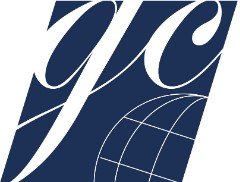Protests at Mary River Mine reveal need for greater indigenous involvement
On February 4, a small group of Inuit hunters travelled for two days and over 150 kilometres by snowmobile to form a blockade at a remote mine in Baffin Island, Nunavut.
The protesters are responding to a proposed expansion of the Mary River iron-ore mine that would see the mine operator, Baffinland Iron Mines, double its annual production to 12 million tonnes. The expansion entails the construction of a 110 kilometre railway connecting the Mary River mine to Milne Inlet as well as a second port dock. According to Baffinland, this expansion is necessary to ensure the mine is profitable – since it opened in 2014, it has yet to make a profit on its $3.5 billion investment due to the low market price of iron-ore.
Despite this lack of profitability, Baffinland’s economic impact on the two nearest communities of Arctic Bay and Pond Inlet has been significant. The mine site employs almost 300 Inuit—approximately 13 per cent of the workforce—and has contributed a total of $288 million to Inuit-owned businesses. In 2018, the Inuit Impact Benefits Agreement with Baffinland was renegotiated to include a $10 million investment in a training centre, $400,000 yearly gas provision to Inuit hunters, and a promise to equip Nunavut hunters with a new boat every three years.
Nevertheless, the group of hunters protesting have been joined by Inuit across the territory and are supported by residents of Pond Inlet and Arctic Bay. Their concerns lie with the environmental impacts this expansion will have, particularly on the caribou and narwhal populations essential to the local Inuit community. Elijah Panipakoocho, an Elder from Pond Inlet, says that the caribou have disappeared and the formerly abundant seal population has dwindled drastically.
The potential impacts of the expansion project are being evaluated by the Nunavut Impact Review Board (NIRB) in hearings that began on January 24. While this first round ended on February 6, an additional two weeks in March have been set aside for another round of NIRB hearings. Representatives of the protesters at the Mary River mine made their case in the first round of hearings, asking for improved representation within the decision-making process.
Baffinland predominantly negotiates with the Qikiqtani Inuit Association (QIA), the regional land claim group of the traditional Inuit land that the Mary River mine sits on. In a statement made by the hunters, they claim: “QIA has treated Inuit haphazardly. Hunters are not considered, communities are not considered, Inuit are not considered, and are only given the means to stay silent.” Since QIA’s negotiations do not reflect the needs and wishes of many of the Inuit hunters and communities in Nunavut, the protest organizers demand recognition as a Designated Inuit Organization under the Nunavut Agreement. This status would give them a more active role in negotiations around the Mary River mine and future mining projects.
While the NIRB will recommend whether the expansion should go forward after the March hearings, the final decision will lie with the federal government. In recent years, decisions surrounding resource extraction projects have tended to side with the Indigenous party. According to Corporate Knights, “no Indigenous buy-in, no dice” has become the new rule of business in the Canadian resource economy. For as long as this trend continues, there is reason to believe the dispute will end in victory for the local Inuit population of Baffin Island.
The time when Indigenous participants of major economic projects remained silent and passive is coming to an end. Royalty payments and contract jobs are no longer sufficient—equity ownership, control, and involvement in environmental planning and sourcing are critical for mining companies to prove to local Indigenous communities that they are a responsible developer. While every project and community is different, it is now essential to have an understanding of and respect the needs of the community, their traditional values, and their vision of economic development.
This degree of Indigenous buy-in is not only vital for getting a project off the ground, but also necessary for ensuring the sustainability of resource extraction activities. As the shift to clean energy occurs and technologies like electric vehicles, grid storage, and solar panels become more commonplace, the need for lithium-ion batteries will require an increase in mining for rare earth metals. With this widespread use, consumers will begin to demand sustainable sourcing—Mercedes-Benz has already promised sustainable batteries and CO2 neutral batteries—and partnerships with Indigenous people are a meaningful first step towards achieving a transparent decarbonization.

